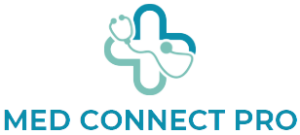TMD symptoms can look a lot like other health problems or conditions. If you’re wondering,what is tmj/tmd ?it refers to temporomandibular joint disorders, which can cause pain and dysfunction in the jaw. That’s why it’s important to exhaust all reversible remedies before considering treatments that involve permanent changes such as surgery or TMJ implants.
Many kids with TMD can find relief with at-home remedies and lifestyle changes, including avoiding chewing hard foods and habits that aggravate the temporomandibular joint, such as clenching or grinding teeth (abnormal sleep bruxism). Medications, such as over-the-counter nonsteroidal anti-inflammatory drugs, can help reduce pain and swelling.
Causes
TMJ stands for temporomandibular joint, which is the hinge-like joint on each side of your head, just in front of your ears. Your jaw moves and glides through this joint with muscles when you chew or talk. TMD is a group of disorders of the jaw muscle and chewing muscles, the bands of fibrous tissue that connect them (fascia), or the joint itself.
Most TMJ symptoms are caused by clenching or grinding your teeth, which can lead to pain in your chewing muscles and the joint. You may also have headaches or trouble opening your mouth fully. Other causes include a dislocated jaw, arthritis in the joint, or trauma to the area.
Over-the-counter pain medicines can reduce discomfort. A dentist or primary care professional can help you find ways to relax your jaw muscles, which can reduce clenching and grinding. Exercise to improve posture and avoid stress can also be helpful. Your doctor can recommend a steroid injection in the affected joint to ease swelling and pain.
Symptoms
The temporomandibular joints (TMJs) connect your lower jaw, the mandible, to the temporal bone on either side of the skull. They work like a ball-and-socket joint with a cushioning disk in between. Large pairs of muscles move the jaw.
TMD symptoms may include jaw pain or difficulty opening or closing the mouth. Other symptoms include a clicking, popping, or grating noise when you chew, open, or close your mouth; tenderness around the jaw area; headaches and migraines; ear pain; shoulder or neck pain; and tightness of the muscles in the head, face, neck, and shoulders.
To diagnose TMD, we will ask about your symptoms and examine your jaw and the surrounding area. We may also order imaging tests, such as x-rays or CT scans, to see if the problem is with the TMJs or the muscles around them. Most TMD problems improve with home treatments. We’ll probably recommend a soft diet; stopping chewing gum or using your teeth as tools, such as tearing clothing tags; and practicing relaxation techniques to reduce stress.
Diagnosis
The temporomandibular (tem-puh-roh-MAN-di-bul) joints, or TMJs, are the “hinges” on either side of your face that connect your jaw to your skull. They are unique in that they allow for both hinging and sliding movements, so you can shift your jaw left and right, forward and backward, and open your mouth wide. They also allow you to chew and speak normally. TMD is a collection of conditions that cause pain in or around the jaw joint and muscles that control movement of the jaw. The exact cause is often difficult to determine, but it may include factors such as:
Your doctor can diagnose TMD by asking about your symptoms and doing a physical exam. They will check your jaw for tenderness, look for a clicking or popping sound when you move your jaw, and perform a complete evaluation of your bite. They may also order imaging tests such as x-rays, CT scans, or an MRI to help find the cause of your TMD.
Treatment
The two TMJs connect your lower jaw, the mandible, to the temporal bone of your skull on either side. They fit together like a ball and socket with a cushioning disk in between and are moved by large pairs of muscles in your cheeks and temples. When these structures become irritated or inflamed, symptoms can occur.
Symptoms include pain in the chewing muscles and jaw joint, which may spread to the neck or face. You may hear clicking, popping, or grating in the joint when opening or closing your mouth, and the jaw might catch or lock in place. You may also experience difficulty eating or yawning.
Many cases of TMD respond well to conservative remedies you can do at home, such as applying ice or moist heat to the area and avoiding habits that irritate the TM joint or muscles (like gum chewing, wide yawning, or clenching your teeth). Some people may need to see other medical specialists for treatment. These may include an oral surgeon, orthodontist, or otolaryngologist.
